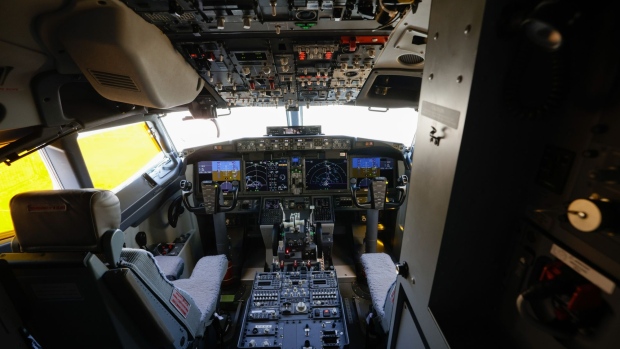Feb 22, 2023
Vanishing Cockpit Recordings Are Impeding Probes of Near-Crashes
, Bloomberg News

(Bloomberg) -- Cockpit recordings from a series of recent air-safety incidents in the US, including three near-collisions on runways, aren’t available to investigators — raising questions about whether rules related to the devices are sufficient.
Black boxes on all six jetliners involved in four close calls since December were automatically overwritten after crews continued on flights or conducted other routine operations, according to the National Transportation Safety Board.
The loss of the data has renewed longstanding calls by the NTSB for the US government to require airlines to capture 25 hours of sound — the standard in Europe since 2021 — increasing the odds that they’ll have useful recordings. Currently, devices in the US record two hours of sound and, when available, can be one of the most helpful tools in determining how accidents occur.
“Twenty-five hours should be the standard across all the countries,” Jennifer Homendy, the NTSB chairwoman, said in an interview. “For us coming late to this, following the European standard, is embarrassing.”
Read More: FAA Calls Urgent Air-Safety Summit After US Near-Crashes
Changing the rules for cockpit recorders faces a number of challenges. In September, the Federal Aviation Administration, which regulates the aviation industry, dropped its effort to require extended recorders. An FAA advisory committee rejected the creation of a new rule “due to competing priorities and resources,” FAA acting Administrator Billy Nolen said at the time in a letter to the NTSB.
The regulator has said it plans to resubmit its request for a 25-hour rule this year and a spokesman referred to the letter when asked to comment.
Pilot unions say they need assurances the privacy of crew members will be prioritized. While the NTSB is prohibited from releasing the raw recordings from the cockpit, there is a “lack of protection” against carriers and others from leaking it, the Air Line Pilots Association, the largest flight-crew union in North America, said in a 2015 letter to the FAA.
JetBlue Airways Corp. Chief Executive Officer Robin Hayes defended the existing recorder standard in an interview, saying so much flight data is available through other sources there is little to gain by changing it. The Airlines for America trade group said it generally supports going to 25-hour recorders, but added there are “many details and considerations that need to be addressed.”
Agencies also typically have a legal duty to show the costs of a new rule don’t outweigh the benefits. New technology makes it easier to store large volumes of digitized sound data, and major manufacturers such as Honeywell International Inc. and L3Harris Technologies Inc. already sell units with those capabilities. But with fatal crashes so rare now, it’s difficult for FAA to show recorder changes will prevent future accidents.
Investigative Tool
Crash-proof black box recorders have been used in air travel for about 60 years. They’re designed to withstand high impacts and fire, and have proved highly reliable after accidents. In addition to the cockpit recorder, a separate device captures 25 hours of detailed flight data.
The NTSB has cataloged more than 40 instances since 2002 in which the voice recordings weren’t available.
Recent incidents, now at the center of debate on the rule, include a Dec. 18 United Airlines Holdings Inc. flight, which descended to within several hundred feet of the ocean after taking off from Maui, Hawaii, and a Jan. 13 runway incident at New York’s John F. Kennedy International Airport involving planes operated by American Airlines Group Inc. and Delta Air Lines Inc. Separately, on Jan. 23 there was a runway incident in Honolulu involving a United jet and a smaller plane, and on Feb. 4 a FedEx Corp. jet came within 100 feet (30.5 meters) of colliding with a Southwest Airlines Co. plane.
Previous cases where recording data was lost include an Air Canada jet that missed other planes on the ground by as little as 20 feet in San Francisco in 2017, and a 2009 flight in which pilots flying from San Diego to Minneapolis went silent for more than an hour and flew past their destination.
While no one was injured in these incidents — meaning investigators could interview pilots and obtain other evidence — cockpit recordings allow investigators to verify crew accounts and identify subtle actions during the chain of events, said James Cash, who formerly served as the NTSB’s chief technical adviser for recorders.
“It’s tough to do that from interviews, especially when they are some period of time later,” Cash said.
--With assistance from Mary Schlangenstein.
©2023 Bloomberg L.P.


